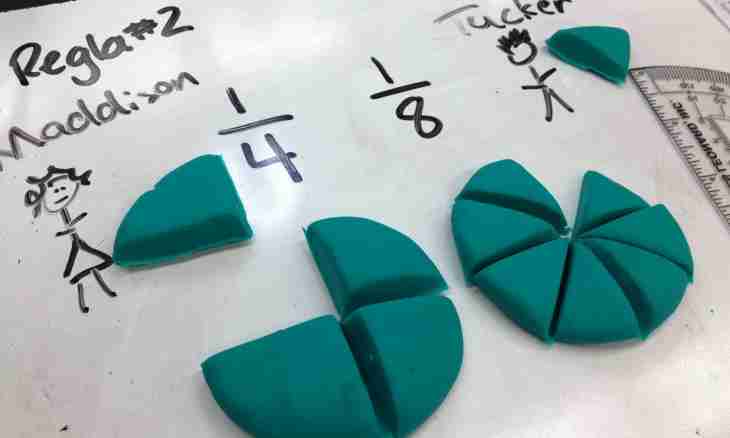Actions over fractions would become completely similar to actions over integers if not existence at them of denominators, often different. Cases when fractions have identical denominators, are the simplest, all other cases in the course of the decision need to be reduced to them. Thus, subtraction of fractions is made through the procedure of their reduction to a common denominator.
Instruction
1. For a start make sure that your fractions I have different denominators. In case it not so, subtraction represents subtraction of numerators of fractions, and the denominator remains the same. For example, 3/5-1/5=2/5.
2. To subtract fractions with different denominators (as well as for their addition), it is required to make their denominators identical. The best common denominator is the least common multiple of denominators of fractions over which subtraction operation is made. The least common multiple is the smallest natural number which totally is divided into each of denominators. For example, a least common multiple of numbers 3 and 5 is number 15. However, as a common denominator any common multiple will approach in general. The easiest and certain way of its stay is multiplication of denominators of these fractions.
3. Time you change denominators of fractions, it is necessary to change also their numerators so that fractions remained invariable. Domnozhte numerator of the first fraction on a denominator of the second (and others if it is more fractions, than two), similarly arrive with other fractions.
4. Now subtract the numbers received in numerators, and you will attribute a common denominator.
5. Best of all the algorithm of subtraction of fractions is clear from an example. Let us need to calculate 5/7-1/2. We will find a common denominator, we will multiply denominators of fractions: 7*2=14. Let's multiply numerator of the first fraction on a denominator of the second: 5*2=10. Then we will increase numerator of the second fraction by a denominator of the first: 1*7=7. Now we will subtract from the first the second: 10-7=3, it is also numerator of total fraction. Let's attribute a common denominator and we will receive total fraction: 3/14.

